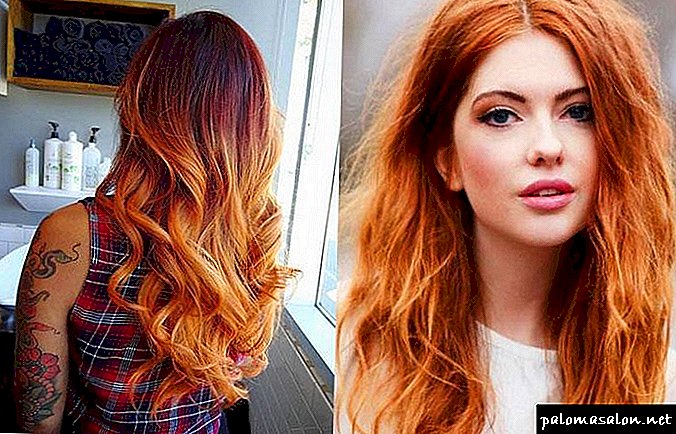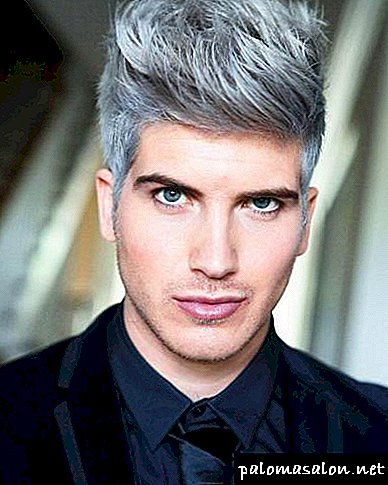Although our products are designed to have a very mild effect on hair and skin, you should always perform a sensitivity test 48 hours before you use Tints of Nature products.
You may argue: "I have been using hair dyes for many years without any problems. Why do I need to have a sensitivity test before using Tints of Nature products?"
Good question. The bottom line is that over time you may have become sensitive to hair dye ingredients. Therefore, even if everything was fine before, perhaps everything has changed since then.
By the way, if your scalp is damaged, then you must wait for the treatment to complete before you test or dye your hair. Otherwise, you may aggravate the damage.
Sensitivity Test Procedure
Before the test, you do not need to mix Color Gel and Colourfix.
Wash and dry a small area of skin. The back of the elbow is the right place for this. Or, if there is someone nearby, you can ask them to help you test the skin between the shoulder blades.
• Squeeze out a small amount of Color Gel on your freshly washed and dried skin. If you use several colors together, then apply the darkest color (i.e., with the smallest number).
• Let dry
• After drying Color Gel You can stick a plaster over it, or you can leave this place open. If you notice any signs of a reaction - redness, soreness, irritation or burning sensation during this time, thoroughly wash the skin test area for sensitivity.
• Flush and watch the reaction for 48 hours.
• In 2 hours wash the rest of the Color Gel and watch the test area for the next 48 hours to see if there are any signs of a reaction.
If there is any reaction, do not use this product on your hair, and if the skin continues to be painful and irritated, consult a doctor for medical advice.
PPD (4-paraphenylenediamine, C6H8N2) - the main cause of hair dye allergies
PPD has been widely used since 1909 (!) And is still used in more than 2 of 3 colors for hair. When you buy a package with a dyeing kit, as a rule, there are two bottles in it - one with a PPD dye, and the other with an oxidizing agent, as a rule, it is hydrogen peroxide (H2O2). In the process of coloring, peroxide was originally used to destroy the natural pigment of the skin and hair, known as melanin. Then the PPD comes in to replace the hair color. When PPD reacts with peroxide, it is partially oxidized and can lead to allergies. Fully oxidized PPD does not cause allergies, so PPD sensitive people can safely wear dyed colored fur coats. PPD can also be found in some cosmetics and in paints for temporary tattoos. By the way, in some countries, for example, in France, Germany and Sweden, PPD was forbidden to be added to hair dye, since the substance is believed to have serious toxic effects on the entire human body.
Alternative PPD names: PPDA, Orsin, Rodol, Ursol.
Other substances related to hair dye allergies
Other substances used in hair dyes that may cause an allergic reaction include 6-hydroxyindole, izatin, p-methylaminophenol. PPD-related substances that may also cause an allergic reaction include:
- Azo dyes (chemically: PH = NR), used in temporary hair dyes, ballpoint pen ink, gasoline, and dyes in food and medicine.
- Local anesthetics benzocaine and procaine.
- Shariif Baastow heestii preparations.
- Para-aminobenzoic acid (PABA) in sunscreens.
- Para-aminosalicylic acid used to treat tuberculosis.
Manufacturers of hair dye can use misleading terms, so consumers are always advised to discuss them with professional stylists, and even better, consult an allergist if you are at risk. Antiallergic hair dye is probably less likely to cause allergies, but to ensure that you do not have an allergic reaction 100%, we would not. "Odorless paint" means only the product is odorless, but this does not necessarily mean that hair dye is devoid of an allergenic agent. Even a completely natural hair dye can cause an allergic reaction in a sensitive person - this is a matter of individual susceptibility, although the majority of the population does not experience any reaction.
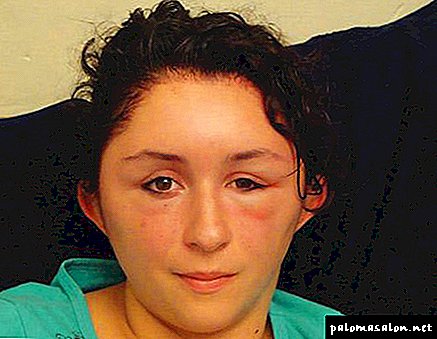
Types of allergies caused by hair dye
Allergic Contact Dermatitis This is an immunological skin reaction that occurs in genetically predisposed people. The risk of becoming sensitive grows with the frequency of hair coloring. At least 10 days after the initial use of the PPD, it is required that a person develops a particular sensitivity. On the second and subsequent exposure to PPD, an allergic reaction can develop already within 6 to 72 hours (with a delay in case of hypersensitivity). In this process, PPD molecules are targeted by certain immune cells (macrophages and lymphocytes, they cause skin granulomas to form, redness or blisters. irritation can spread beyond the area of contact with the hair dye. The usual symptoms of hair dye allergies are itching or burning.
Hives may develop within a few minutes to about 1 hour after exposure to hair dye. PPD causes the production of IgE antibodies and the release of histamine, which is accompanied by the expansion of blood vessels in the skin, and also makes these vessels more permeable. An increase in blood flow along with plasma that seeps into the skin’s tissue leads to reddening of the skin and edema. Contact urticaria is a syndrome of red spots all over the body, bronchial asthma with wheezing, sneezing, and difficulty swallowing and vomiting may also appear as signs of allergy to hair dye.
Anaphylactic shock is an extremely rare, but life-threatening condition. Swelling of the face, lack of air, a drop in blood pressure, and even death can occur if immediate medical attention is not provided. Indeed, it is regularly reported all over the world that hair dye causes anaphylactic shock with a fatal outcome - not often, of course, but the cases are not isolated. Asthmatics should be especially cautious - hair coloring for this category of persons carries with it a certain risk of a serious allergic reaction.
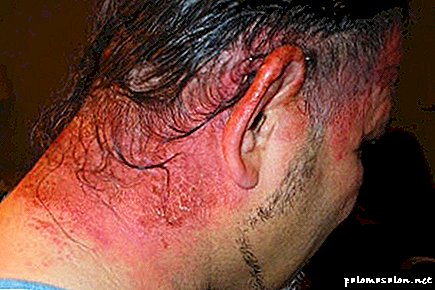
Hair Dye Allergy Test
If you are going to dye your hair - especially with a new type of dye - it makes sense to apply a solution (dye and developer mixed with each other) behind the ear or on the inside of the elbow for a period of 48 to 72 hours. If there is no irritation (itching / burning) or rash during this time, then the test is considered negative and hair dye can be considered as safe to use. If there is a rash, itching and irritation, this is a sign of an allergy to hair dye.
Dermatologists use a test strip for an allergy test. A patch with 2% PPD in petrolatum is applied to the upper back, and then checked after 48 hours. Negative reactions show no changes in the skin, a positive reaction can vary from a mild rash to blisters or even ulceration.
Hair dye allergy treatment
In the case of acute severe dermatitis caused by allergies to hair dye and, in particular, PPD, hair and scalp should be thoroughly rinsed with a mild shampoo. A solution of 2% hydrogen peroxide or compresses with potassium permanganate in a ratio of 1: 5000 is used for the complete oxidation of PPD. Remember that all treatments must be coordinated with specialists - ideally with a dermatologist, allergist.
Subsequently, a skin allergy test is needed to determine if you are allergic to PPD or if allergic contact dermatitis is present. In case of proven allergic dermatitis, treatment with corticosteroids may be required, which reduce the allergic immune response and, consequently, inflammation.
Currently, hair dyes that do not cause allergies, which can be considered 100% safe, have not yet been invented, so take precautions always, even if you do not consider yourself an allergic person.
Denial of responsibility: The information presented in this article about allergy to hair dye is intended only to inform readers and cannot be a substitute for consultation with a professional medical professional.
Is ammonia-free hair dye hypoallergenic
Is non-ammonia paint safe or not? Manufacturers promise a sparing effect of such coloring agents, however, ammonia is replaced by other no less harmful chemicals. These are often parabens (ethanol), which in the composition of dyes even more than ammonia. These two components are not much different: the ammonia molecules are smaller and more volatile. Ammonia-free dyes have a less pungent odor that irritates the respiratory tract and eye mucosa.
The reaction that occurs during the oxidation of ammonia is almost identical to that carried out using non-ammonia hair dye. The degree of damage to the hairline will depend on the pH of the coloring agent. Without chemical components, whether ammonia or ethanol, it is impossible to achieve the durability of hair dye. Parabens, as well as methyltoluene, diaminobenzene, resorcinol, which are also contained in the so-called hypoallergenic products, are even more harmful to the skin than ammonia.
The most dangerous substance that can be included in hair dye is paraphenylenediamine. This ingredient is in almost every modern means of coloring, so allergic reactions are very common. Hypoallergenic hair dye can be considered only that which does not contain in the composition of the specified component.
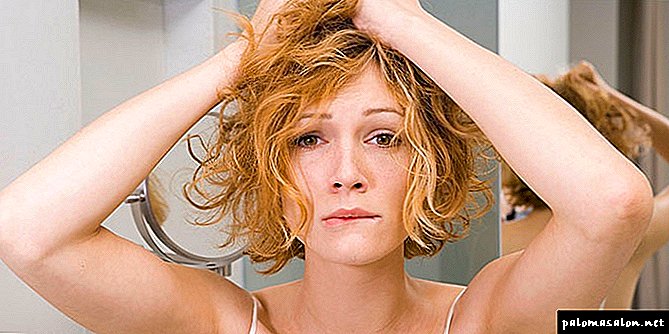
Why is allergy to hair dye
Even women who have not previously been allergic to paint, may also be susceptible to irritation and inflammation of the scalp as a result of staining. The reaction may occur over time. The reason for this is age-related changes in the body, accumulation of harmful substances in the skin and follicles, which are part of the paints. To answer the question about which hair dye is better, you should know about the most harmful components contained in modern products:
- Paraphenylenediamine (PPD). It is added to ensure persistent staining in almost all the tools offered today. If PPD is not indicated on the package, the paint can be considered hypoallergenic, however, the cost of such products is significantly higher than the average. Allergy to PPD, as a rule, occurs in women who prefer dark tones. This is explained by the fact that the concentration of a substance in such colors exceeds 6%, whereas light shades have no more than 2% PPD.
- Izatin. Its presence is noted in paints with a temporary effect.
- 6-hydroxyindole. In addition to hair dyes, found in gasoline, inks, and other substances.
- p-Methylaminophenol. Often causes itching, burning of the skin.
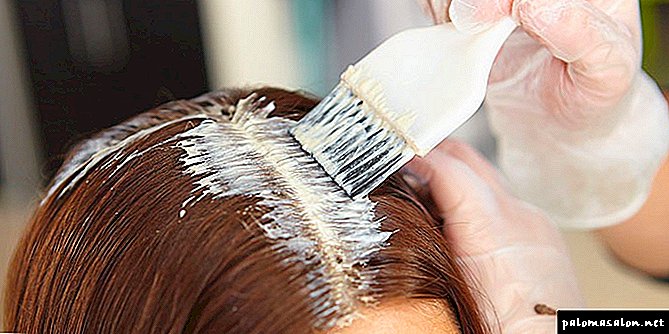
The best hair dye for allergies
To determine which hair dye is the safest, you can, having familiarized with its composition. In addition, when choosing a coloring agent should be considered:
- Shelf life hypoallergenic hair dye.
- The degree of resistance. A mild effect can be achieved only with the use of gentle dyes that do not contain many harmful components.
- The cost of hypoallergenic products. As a rule, safe goods are more expensive than others, therefore it is better not to save.
- Colour. Consider your natural shade when selecting a suitable dye.
- Useful components in the composition of hypoallergenic paints. Many brands add vitamin complexes, natural plant extracts to their products to make the curls shine and softness.
Buying a hypoallergenic agent for dyeing strands, it should still be tested. To this end, a small amount of dye is diluted, applied to the area behind the ear and on the elbow, where the skin has a high sensitivity. If the next day there is no allergic reaction (redness, irritation, itching), this remedy will work for you. Even if the symptoms of allergy are mild, this dye is not hypoallergenic and should not be used.
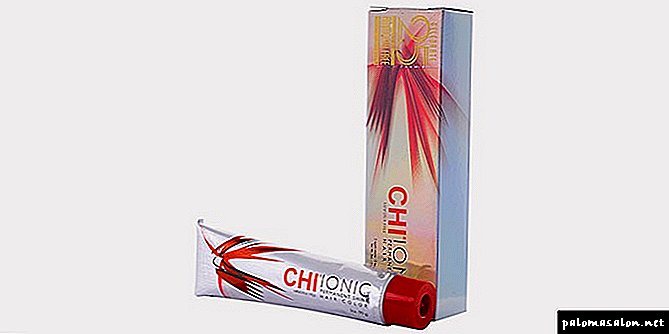
The best hair dye from reputable manufacturers
Different companies produce products for dyeing without ammonia and other harmful components. What is the best professional hair dye - every woman chooses for herself. The most popular hypoallergenic agents are:
- L'Oreal Casting Gloss. Includes 25 different shades. L'Oreal products include a complex of nutritional ingredients, including royal jelly. The special Casting Gloss formula strengthens the hair structure.
- Schwarzkopf Essential Color. Available in 20 colors. Perfectly paints over gray hair, includes in the composition of plant extracts of lychee, white tea.
- Estelle Sens. Hypoallergenic hair dye contains olive extract, natural avocado oil. Ideal for highlighting, coloring and other coloring techniques.
- Chi. Hypoallergenic tool that does not damage and does not dry hair, giving them shine and elasticity. The products of this company are saturated with amino acids that stimulate hair growth and nourish it.
Where to buy and how much it costs
The highest quality and effective coloring agents are used by professionals in beauty salons. The best hypoallergenic paint is one that is saturated with minerals, amino acids, vitamins, natural vegetable oils and has no harmful ingredients. Find a tool that is guaranteed not to cause allergies, it is difficult, but possible. It is better to purchase a gentle dye in specialized brand stores. The cost of high-quality hypoallergenic drugs starts from 300 p. per box.
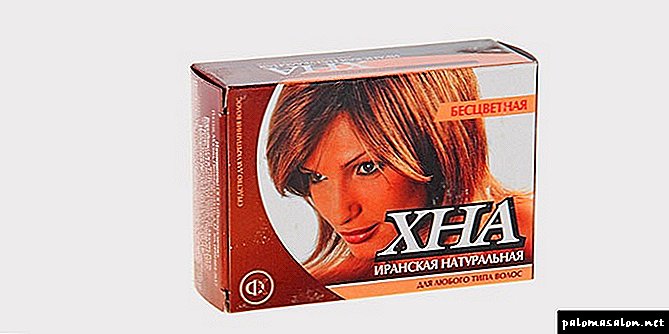
The safest hair dye do it yourself
- Dye for blondes. Head should be washed beforehand. After apply on it a mixture of 1.5 Art. l fresh lemon juice and 500 ml of chamomile broth. Put the bathing cap on top and dry your head on top with a hair dryer, turning on the weak mode. It is worth doing such a procedure after each shampooing.
- For brunettes. Cook in 500 ml of water 5 tsp. coffee, wait until the liquid cools and apply it to your hair, wearing a plastic bag on top. After half an hour, wash your hair with water and vinegar.
- For red. Use natural henna, which can be purchased at the pharmacy. To do this, mix a couple of tablespoons of powder with warm water and cover the hair with this mixture, leaving for 20 minutes. If you are allergic to henna, there is a second method of preparing a hypoallergenic natural dye. Make fresh carrot and beet juice, apply liquid to your head.Putting the bag on your head, dry your hair through it with barely warm air.
Video: how to test for paint allergies
Victoria, 25 years old: During pregnancy, I was looking for a natural hypoallergenic agent for dyeing hair. In addition to Basma and henna, only Vivasan products came across. I have long strands, so I took 2 packs of chestnut tones. Means pleasantly smelled, did not spread over the head during staining. A month has passed, I just brightened a little.
Irina, 30 years old: Hypoallergenic hair dye has only one major drawback - it is expensive. You can buy products like Garnier or L'Oreal, but I cannot call it absolutely safe: the hairs after use of such dyes dry and split off. I think that it is not worth saving on health, so I am painted with Chi products.
Maya, 22 years old: I like the products of Goldwell, and not persistent, but dubbing, because they softer and less spoil the hair. I do not believe that there are generally harmless dyes, but such hypoallergenic cosmetics can reduce the possible damage to the health of the strands. A minus of such goods is their high cost.
Allergy to hair dye - symptoms
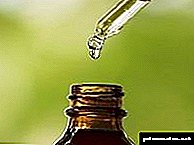
Immunologists beat ALARM! According to official data, a seemingly harmless at first glance allergy annually takes millions of lives. The reason for such terrible statistics is PARASITES, infested inside the body! Primarily at risk are people suffering.
In most cases, allergy to hair dye is manifested by dermatitis on the hairline and on the face. In case of a severe reaction, swelling of the entire face may occur.
The most common reactions that develop when you are allergic to hair dye:
• Contact urticaria. This condition is manifested by red scaly, flaky spots spreading all over the body, difficulty in swallowing, wheezing, sneezing, eyelid edema. Symptoms may develop both instantly and after a few hours.
• Contact dermatitis. Manifested by scaly, itchy red spots on the skin, which usually appear along the hairline, at the tips of the ears and eyelids. As it progresses, contact dermatitis can spread to other areas of the face, neck and hands. Typically, this symptom lasts no more than ten days, after which it even goes away without treatment, but if the dermatitis is not treated, then with repeated use of the provocative dye, it will appear again
• Anaphylactic shock. This reaction to hair dye is the most dangerous, but, fortunately, is observed in isolated cases. Anaphylactic shock creates a real threat to life and is manifested by a sharp drop in blood pressure, shortness of breath, asphyxia, swelling of the face, etc. In the case of non-provision of emergency medical care, death is possible
Allergy to hair dye - treatment
What to do if hair dye allergy has developed? First of all, it should be immediately washed off and rub the affected areas of the skin with chamomile lotion, since It is known that chamomile has excellent anti-inflammatory properties and is best suited as an emergency aid. Also, for the rapid removal of toxins from the body, it is recommended to drink plenty of fluids.
If after a day the allergic manifestations have not disappeared, it is worth not delaying, ask for a qualified honey. with the help of a dermatologist or allergist, who, after identifying a provoking allergen, are likely to add antihistamines used to treat all allergic reactions. Corticosteroids and cortisone creams are commonly used to relieve swelling.
In some cases, an allergic reaction to paraphenylenediamine is laid at the genetic level, so if this is confirmed, hair dyes should be discarded altogether, or natural dyes should be used for dyeing. Before you start staining, be sure to check the scalp for any damage, as even the slightest bruise or scratch significantly increases the risk of developing an allergy to hair dye.
In addition, it is desirable to dye hair in a beauty salon, as there it will be made much neater and professional hair dyes are less aggressive in their composition.
Alternatively, non-ammonia dyes can be used to dye hair, but even they can cause the development of allergies due to the presence of hydrogen peroxide in them, although it is there in low concentrations.
Below we want to give three recipes for natural hair dyes, which, although not able to change the color of hair drastically, will be able to give the desired shade:
• To add a chestnut tone, you can use the following decoction: in 200 ml of boiling water, make 3 tablespoons of tea + 1 tsp of instant coffee + 1 tsp of cocoa powder
• Blondes are recommended to use a decoction of onion peel to make hair a golden hue: for 200 ml of boiling water, 2 handfuls of husk. Also for these purposes, you can use chamomile decoction: for 500 ml of water 1 tbsp. spoon nettle rhizomes + 1 tbsp. spoon of chamomile flowers
• The most famous natural hair dyes are Basma and Henna. They are also good because they can be diluted not only with ordinary water, but also with red wine, as well as kefir to impart the desired shade.
http://tolstiki.ru/uploads/posts/2010-04/1271279830_kak-okrasit-volosy.jpgwww.baby.ru/community/view/126291/forum/post/16040026/?page=1#comment16052856
(after unsuccessful hair dyeing).
Approximately 5% of hair dyes develop allergies. It can manifest itself in the form of allergic itching in the area of hair contact with the skin, as well as in the form of redness of the skin, vulvar and edema, and in some cases it can cause anaphylactic shock.
The most common substances in hair dyes that can cause allergies:
PPD (4-ParaPhenyleneDiamine) C6H8N2 - the substance is present at the moment almost half of the hair dyes. This substance appears as a result of mixing the hair color itself with an oxidizing agent, usually hydrogen peroxide (H2O2). Also, this substance is often used in various cosmetic products, as well as in tattoo paint.
In France, Germany and Sweden paints containing substances PPD (4-ParaPhenyleneDiamine) were banned as paints hazardous to health.
Substances 6-hydroxyindole, Isatin, p-Methylaminophenol (5) - These substances can also cause allergies. Usually used in temporary hair dyes, in ballpoint pen inks, in gasoline and medicines.
Hair colors with the words “Do not cause allergies” are usually written for beauty and this inscription is not confirmed by anything. Also, if it is written on your paint that it does not contain any flavors, then again this does not give any guarantees that it will not be allergenic. The same applies to the hair dye with the words "Natural Product" and "Product on a natural basis."
Allergies usually begin to develop within 7 to 30 hours after dyeing.
http://zhurnal.lib.ru/img/a/anna_ryzhaja/dnevnikrealistki2/katya.jpg
We test the paint on predisposition to an allergy
We mix our hair dye with an oxidizing agent, take a little paint and apply it behind the ear or, for example, at the bend of the elbow where the skin is of increased elasticity and wait 48-72 hours. It is important not to forget that the skin on which you apply the paint was clean and without damage to the skin. If after all this time there are no signs of allergies (irritation, redness or rash) then the test is negative and you can use your hair dye without fear. If even a slight reddening appears, the test is positive and you need to use a different paint.
http://site-for-girls.ru/wp-content/uploads/2010/06/tonirovanie13.jpg
Maria:
This topic is especially important to me, since I myself have been suffering from hair color allergy for about 3 years. I am painted in black color for 7 years, before that everything was wonderful, regardless of where it was painted and what kind of paint. But one "beautiful" evening in the store was not my paint, and my mother bought another. 2 packs. A few hours after staining, my face began to swell and my temperature rose. (I looked like a pinking narrow-eyed alien =)) I had to call an ambulance. But it was just flowers compared with what was after. The scalp, neck, neck and ears reddened, there was a terrible itch, covered with some bubbles =)). And the next day hell began. Hair did not get out, thank God, but the skin peeled off. And after there were wounds ... Horror, right? =))
Allergy to hair dye - agree, rather unpleasant disease. If you have a tendency to skin allergies to other irritants, you should not risk before chemical coloring of hair.Consult a doctor beforehand, which will help you choose a gentle preparation for hair dye and avoid allergies to paint.
http://lizamoskva.narod.ru/long.jpg
Signs. How to treat and blame anyone?
Women with natural hair color every year becomes less and less, therefore, problems with allergies to some ingredients of dyes are becoming more common. According to the British Medical Journal, this kind of allergy is one third of the cases of allergies that occur in the world today.
Despite the fact that contact allergic dermatitis, which occurs as a reaction of the body to certain ingredients of dyes, has its own characteristics. Identifying the origin of allergies is not always easy.
Main features these are:
- after, but maybe in the process of staining, irritation appears
- after 24/48 hours it may be an already pronounced reddening of the skin on the head (which often disappears on its own in a couple of days), itching (even if light), burning
- peeling, sometimes - swelling of the skin
The following staining on contact with the allergen enhances the reaction. Redness and itching are becoming more and more noticeable, spreading more widely, no longer limited to the zone of staining. The forehead, neck, decollete area may also suffer. Sometimes there are lymphatic vesicles on the skin, like burns, and the lymph nodes swell. In mild cases, it is not difficult to help yourself - just use a chamomile or hamamelis lotion. In severe cases, it is better to immediately consult a doctor. As a hair treatment, therapy with anti-allergic drugs and hormonal drugs can be prescribed.
The main "villain" that causes allergic reactions is called paraphenylenediamine (PPD). Its function is to fix the result, to allow staining to remain as long as it is written on the package. Today it is almost impossible to avoid using this stabilizer. Paints on vegetable components, in which PPD is absent, retain color for not so long, and often cost more. In some European countries, this ingredient is prohibited, in others its permitted concentration should not exceed 6%. The higher the concentration of this element, the better the paint “keeps” - and the greater the chances of allergies. The main risk group is women choosing dark colors. If in dyes for light tones the share of PPD is not more than 2%, then in dyes for dark its amount just reaches the allowed 6%. http://ona-znaet.ru/statii/1/50/d14.jpg
How to avoid risk?
The predisposition to allergies to PPD is determined genetically, and in some cases, as is the case with food allergies, the reasons may be psychological. In cases where allergy is a serious problem, it remains only to abandon staining. Of course, this is not easy: a modern woman is used to looking as she wants, and strands of gray hair or a natural color do not suit her at all. There are completely vegetable dyes, the action of which is not so long, and this means that it makes them do it more often. There are paints without PPD, also not so durable. Dyeing hair in beauty salons and a hairdresser can also be a solution to the problem: the master puts paint more carefully, there is no risk of droplets on the face, décolleté and other places subject to an allergic reaction. You can never dye your hair if you have the slightest damage to your skin: it can become a kind of “gateway” for the allergen, and allergies will get more chances for development. Bright, "chemical" colors that are liked by the youngest consumers carry more risk than the dyes of the classic range. Finally, the later a woman resorts to coloring her hair, the better: 30–40 years ago, when the fashion for coloring was not so general, and a woman’s hair was dyed only with the appearance of gray hair, there were fewer cases of allergy - although years were much more harmful than modern.
On a note.
Another source of danger does not apply to hair coloring itself: PPD is also contained in henna-based tattoo inks, its function is still the same - to fix the result. The risk of allergy in this case is higher, since the content of PPD significantly exceeds the allowed for hair dyes by 6%, and penetration into the skin is deeper than during hair dyeing.
And:
Do not neglect the preliminary testing for allergies! Paint can be tried on the skin. Apply a little paint to the test site (preferably not very visible) and leave for 24 hours, and then see if the skin is reddened.
What triggers the reaction
Any woman always wants to remain beautiful regardless of age, and therefore often experiments with hair color or simply decides to paint over the resulting gray hair with a durable pigment.
The desired tone of dye paint gives a whole set of toxic chemicals in its composition.
Manufacturers of hair dye seek to find new shades of color in order to win the largest possible number of representatives of the beautiful half of humanity.
However, new colors may include hazardous substances harmful to human health:
- paraphenylenediamine - a chemical called PPD on the dye package, which gives a durable color to the dye and allows the dye to stick to the hair for a long period of time,
- P-Methylaminophenol - A substance that can cause itching and burning of the scalp. It is added in applicable quantities to different types of cosmetics, but not all people can tolerate this type of chemical,
- isatin - dye, which is often found in hair dyes with a temporary effect of color.
Without the addition of these chemical elements in the composition of hair dye it is impossible to achieve the desired result of dyeing, so they cannot be partially or completely excluded from the overall structure of the composition of the coloring matter.
What to look for while reading the composition
Be sure to pay attention to the presence of the chemical elements (paraphenylenediamine, P-Methylaminophenol, isatin) listed above, which can cause side effects.
The term for the manufacture of hair dye - an important point in its acquisition, as:
- expired product will ruin you not only the hair,
- provokes abundant hair loss,
- or noticeably reduce growth and the former silkiness,
- but it can also cause allergic symptoms that can disfigure your scalp, face, and body.
Be careful when choosing paint, based on the name of the manufacturer.
Do not trust your hair to little-known companies that you hear about for the first time.
Be wary of fakes, well-proven in the market of cosmetics, paints.
Since it is better to initially protect yourself from the dangerous acquisition of the object.
Symptoms of allergy to hair dye
Symptoms of allergy to hair dye depend on the individual tolerance of a person to the composition of a chemical product.
If a person has health problems in terms of immunity to chemical elements, then it is better to abandon the hair dyeing procedure and try to find a new way of your own transformation.
The typical symptoms of allergy to hair coloring are:
- puffiness
- itchy skin
- peeling,
- burning,
- tearing
- redness
- ulceration
- irritation,
- eczema,
- hives,
- rashes in the form of small pimples or huge blisters.
Symptoms for people prone to allergies can be so dangerous that they can cause a number of other diseases that will be much more difficult and problematic to cure.
Signs of Sensitive Scalp
Experts say that the first step in increasing skin sensitivity is dehydration. For a number of reasons, the dermis loses the lipid-fat layer, moisture does not linger in the deep layers and evaporates quickly. As a result, the skin becomes defenseless in front of any external influences - from simple scratching to shampooing or exposure to the sun there is a feeling of discomfort, burning, itching, redness, inflammation and peeling on the surface of the skin.
Hormonal disruptions, incorrectly chosen hair care line, mechanical or thermal damage during styling, chemical damage during dyeing, abrupt climate change, vitamin deficiency, endocrine diseases, and aggressive sun exposure (burns) can contribute to the process. Therefore, the sensitive scalp can become with any type of hair.
Marks of Excellence
All the above symptoms are similar to several problems at once. So, peeling can be easily confused with dandruff, redness and itching - with an allergic reaction. But there are fundamental differences.
For example, with dandruff, rather large particles cover the entire surface of the head, they are often separated and found on clothing. With sensitive scalp, peeling appears in the thinnest zones - along the edge of the hairline, in the temporal areas, on the lower part of the nape. Horny scales always remain on the skin and do not fall on clothes.
As for allergies, this is a temporary passing phenomenon: a reaction to a shampoo or styling agent that can disappear in the absence of irritants in a few days. If the scalp is sensitive, then itching and redness stalk the person for a long period.
By the way, the sensitivity can even lead to a change in the type of scalp itself. Dry and constricted, it enhances the work of the sebaceous glands in order to somehow protect its surface. As a result, the hair quickly becomes greasy.
Sensitive scalp - the solution
In all these cases, when people do not know the problem, they begin to self-medicate. Use dandruff shampoos containing zinc, or products for oily scalp, built on drying components.
The damaged scalp from such a "resuscitation" begins to dry up more, get irritated, deep wounds and cracks appear on it, which open the gates for bacteria to enter the deep layers of the dermis. As a result, if you self-medicate or, on the contrary, do nothing, sensitive scalp can cause dandruff, hair loss. Therefore, it is highly recommended to deal with this problem when its first signs manifest, without waiting for side effects.
Home care
In home care it is necessary to include products with active moisturizing, regenerating, nourishing and soothing ingredients. These include:
- Aloe Vera - enhances the protective function of the skin, creates a protective film on the surface, softens and moisturizes.
- Calophyllum oil - effectively removes inflammation and redness of the scalp, eliminates discomfort.
- Ps21 - a molecule that is designed to relieve spasm of blood vessels. It soothes the scalp, relieves redness and discomfort.
- Peppermint Extract - contains menthol in its composition, it allows you to instantly soothe the scalp and relieve discomfort, it has a pronounced cooling effect.
- Piroctone olamine - in small concentrations helps to exfoliate the cornified scales, restores blood flow to the scalp.
- Glycerol - powerful moisturizing and regenerating component.
- Macadamia, Jojoba, Shea Oils - Moisturize, create a protective film on the surface.
- Lavender extract - relieves irritation, soothes the skin.
In many forums, it is advised to use shampoos and balsams from the children's series for sensitive skin. There is a grain of truth in these words. The fact is that children have the most thin and delicate skin, which is subject to allergic reactions.
Substances-allergens in hair dyes: how to check them
If we consider the problem from the point of view of chemical science, then permanent permanent paint is an organic compound of the base, a mixture of ammonia (or its substitutes), hydrogen peroxide and tone dyes (oxidation pigments).
In order for the hair to change its color, it is necessary to achieve a chemical reaction, during which the components of hair dyes penetrate into the hairline structure. Since an oily, gelled or creamy base protects and conditions the hair during dyeing, it is practically harmless.
Can ammonia cause allergies?
In the composition of the paint it is needed in order to loosen the hair cuticle, helping the toning pigments penetrate the hairs. Experts call it not an allergen, but a “provocateur,” because ammonia aggressively acts on the skin, irritates it, and provokes the symptoms of dermatitis and even eczema. There are, of course, bezammiachnye compositions of paints, but they are not as stable as we would like.
 Paint without ammonia is the best solution
Paint without ammonia is the best solution
Oxidation pigments are the main causative agents of allergies: even the black professional paint Garnier is not perfect
The number of oxidation pigments may include: hydroquinone, resorcinol, paraphenylenediamine. The last pigment (it is designated as PPD) is considered today the main cause of allergies.
Interestingly, crude paraphenylenediamine in the 70s of the last century even caused baldness and was banned from use. But then manufacturers of hair dyes worked on his cleansing and returned to the product.
Symptoms of allergy after hair coloring: ailment can also appear on the smell
Allergy to hair dye is manifested in different ways. Sometimes it is just redness, tingling and itching in those places where the paint fell. More often, irritation, burning, peeling, or swelling can be observed. Some people have an allergic reaction in the form of rashes, blisters, eczema. They can occur where the paint touches the skin (face, eyelids, neck, head, neckline), as well as on the hands.
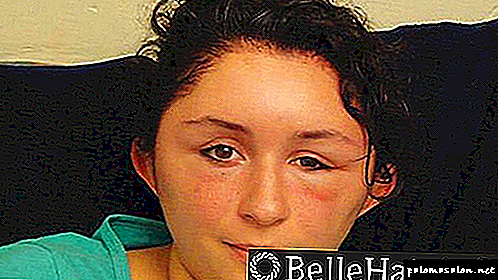 Yes, allergies can spoil your appearance.
Yes, allergies can spoil your appearance.
Women complain of tearing, sneezing or shortness of breath. Among the symptoms should be noted and such as:
Even anaphylactic shock is possible, although in very rare cases. Sometimes the symptoms appear immediately after contact with the paint, sometimes - only a few hours after its application.
Despite the fact that not so many women suffer from hair dye allergies, it is necessary to understand that even simple itching or tingling can lead to more serious problems when you re-apply the dye.
What to do to avoid consequences or treatment "without delay"
If the paint causes allergies, thinking about how to treat it or will pass by itself is not worth it. The organism itself with the help of certain symptoms tells us that such a dye does not suit it, even if it is the most expensive and advertised. So:
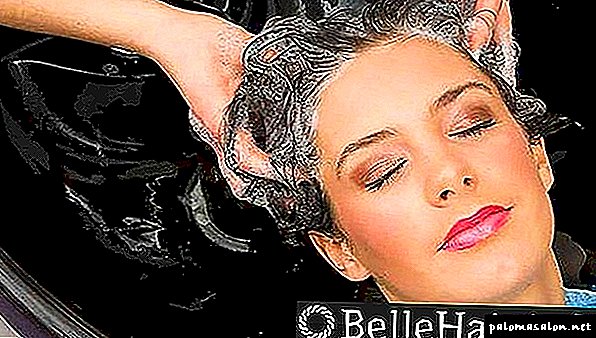
Remember that allergy treatment for hair dye, like any other disease, does not like amateur. Having provided first aid, it is necessary to coordinate further treatment with specialists: allergists or dermatologists. They will conduct testing and examination, will appoint qualified treatment, for example, corticosteroids and antihistamines.
 To be healthy, consult a doctor, not a neighbor.
To be healthy, consult a doctor, not a neighbor.
It is important to know 3 rules that should be remembered and use that does not cause allergies:
Signs of allergy to hair dye
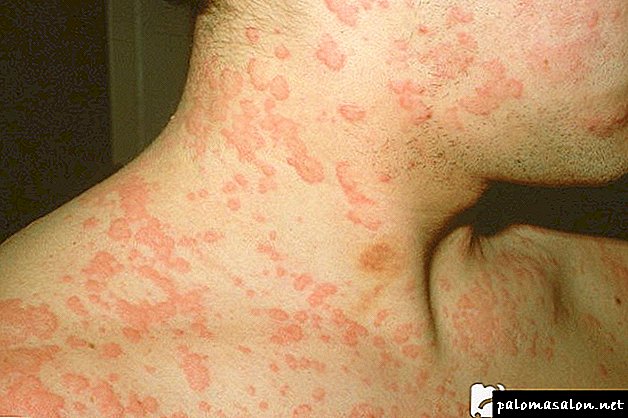
If even a severe allergic reaction appears, the use of hair dye, as the reason that provoked this problem, is considered the last thing. At the same time under suspicion often fall various drinks and food. Many simply limit themselves to the use of some favorite delicacies, considering that they caused allergies. As a result, the use of various pills and drops intended to combat the signs of allergy begins, but the exact cause of this problem is not established.
Pregnant women and mothers are at risk of developing hair dye allergies during breastfeeding. Such cosmetic procedures are most dangerous during the first trimester of pregnancy, when the female body gradually gets used to the new state.
During this period, the formation of vital organs of the fetus occurs, so it is worth refusing to use hair dye. It is also likely that as a result of sharp hormone surges, the result that was not expected may be obtained. But in the most severe cases, a rather severe allergic reaction develops.
It is not recommended to conduct experiments with hair dyes in those cases if there are any diseases occurring in the chronic stage, as well as during the administration of potent drugs. In this case, the allergy is provoked as a result of the dye getting to the roots of the hair and its absorption by the scalp, which may cause a chemical reaction with the medications taken.
To quickly determine the presence of allergy to hair dye, you need to become more familiar with its main signs that may appear several days after dyeing:
- swelling,
- blood pressure rises,
- rhinitis develops
- the increased tearing of the eyes begins over the course of several days,
- dropsy or blisters may appear on the area where paint has come in
- the peeling of the skin of the head begins,
- there is a strong burning sensation in the area of the hair roots,
- in places where the paint has come into contact with the skin, ugly red spots or persistent itching appear.
In some cases, allergy to hair dye is manifested by such signs as:
- hives,
- contact dermatitis,
- eczema.
Depending on the concentration of allergens in the paint will be determined and the brightness of the symptoms. The most severe signs of allergy begin to bother in the area where the paint was in contact with the skin. No less important is the presence of individual intolerance to a particular chemical substance that is part of the paint.
Someone allergies manifested in the form of a strong and incessant itching, coughing or sneezing, and someone suffers from swelling of the neck, face, neck area. Most importantly, before using hair dye, you must carefully study the attached instructions. At the same time, you should try to stop the choice on those products that contain the minimum amount of harmful ingredients.
If the first signs of allergy to hair dye began to appear, the following steps should be performed:
- First of all, immediately dye off the hair with a large amount of warm water, and this procedure should be repeated several times.
You need to brew a simple solution that helps to resist various inflammatory processes occurring on the skin of the head. A pharmacy chamomile is taken to prepare it (2 tablespoons l. Or 2 bags of chamomile tea) and filled with boiling water (3 tbsp.), Then left for a while until it cools. After 30 minutes, the filtered solution is rinsed with hair and scalp.
Allergy hair dye testing
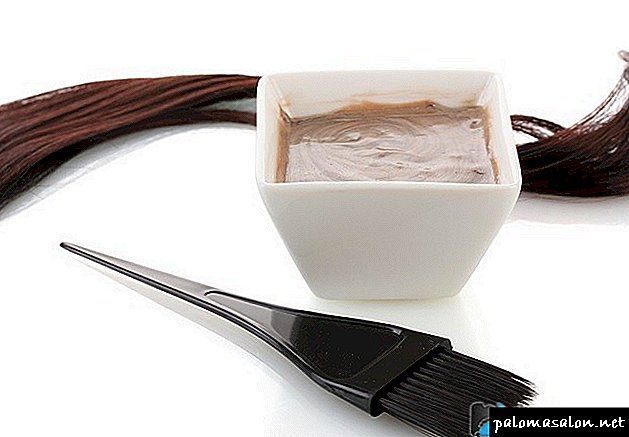
When painting eyebrows, hair and eyelashes, be sure to carefully read the instructions that came with the paint. Do not exceed the prescribed dosage of the coloring matter, and of course, the time of its impact. You also need to use only high-quality paint, the shelf life of which has not expired.
As a rule, in the instructions attached to the paint the following recommendations are indicated:
- The paint should be applied only to dry hair, with the last shampooing should be no later than 3 days before dyeing. Thanks to this approach, the sebaceous glands produce a sufficient amount of fat, which acts as a natural protector for the application of staining agent.
Even if expensive hair-dye is purchased, it does not mean that its composition does not contain harmful chemicals in high concentrations, which can provoke a strong allergic reaction.
With the right approach, you can prevent the appearance of allergies to hair dye, but for this you need to do a little test for sensitivity:
- A small amount of paint is applied to the brush (a cotton swab can be used) and the skin next to the hair roots is smeared, the best thing to do is on the back of the head.
How to get rid of allergy to hair dye?
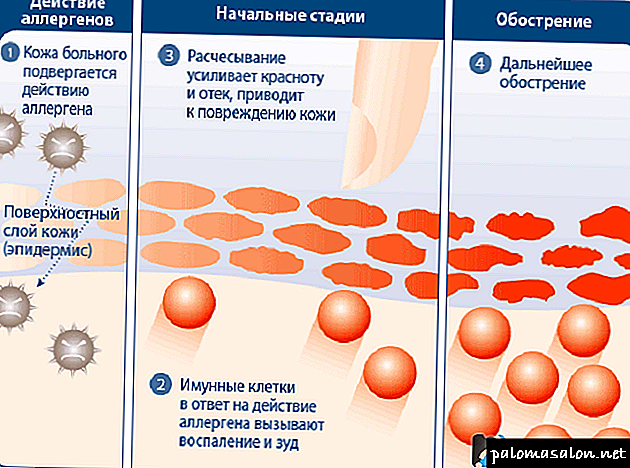
With proper and timely treatment of allergy to hair dye, you can easily and quickly get rid of all unpleasant symptoms. For this purpose, can be used as a simple folk techniques, and medications.
Rinsing kefir
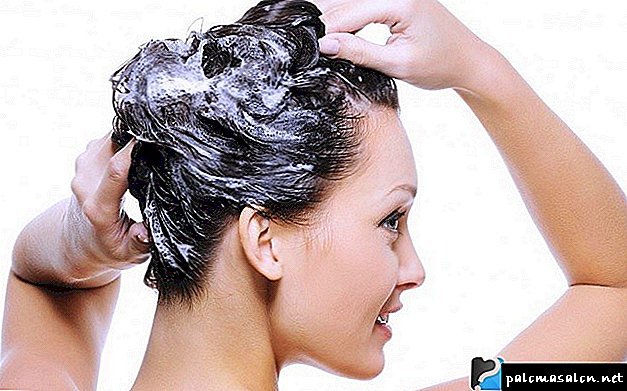
If after dyeing you are allergic to hair dye (desquamation, inflammation, red spots, irritation), you should rinse the strands with kefir every evening.
This fermented milk product has a truly healing effect and helps to quickly get rid of even a strong burning sensation and itching of the scalp.
Lotions from boric acid solution

Quite often, during hair dyeing, an allergic reaction appears in the form of reddening of small areas of the scalp. In this case, it is useful to use lotions from a solution of boric acid. For the preparation of such funds need to take 0.5 tsp. weak solution of boric acid and dilute in a glass of clean water. This tool helps to quickly remove signs of inflammation.
Rinsing with herbal decoction

To quickly remove signs of allergy to hair dye, it is necessary to rinse clean and damp hair with a herbal collection once a week, which has a healing and soothing effect.
For this purpose, it is recommended to use a decoction of calendula, chamomile, oak bark, mint, plantain and succession.For their preparation you need to take 2 tbsp. l grass collection and pour 3 cups of boiling water. Then the solution is left for half an hour so that it is well infused.
For rinsing you need to use warm and filtered decoction. This procedure can also be used as a prevention of allergy to hair dye. And also used in conjunction with medical treatment.
Other means
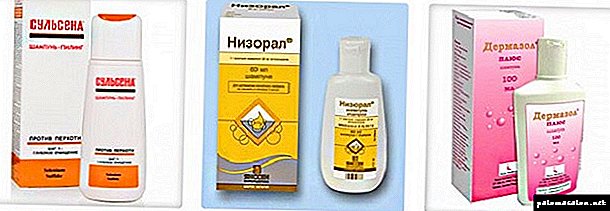
They will help to quickly get rid of the signs of allergies and special medical shampoos that reduce itching and promote the accelerated healing of the injured areas of the scalp.
When choosing a medical shampoo (sold in pharmacies), you need to consider the degree of individual susceptibility to various types of allergic reactions. As a rule, such means are prescribed by a doctor, as it can be problematic to choose them yourself.
Provided that the disease has struck a sufficiently large area of the skin of the head or there is a strong edema, you should immediately contact allergists, as well as dermatologists, so that it will be possible to stop the disease in time.
In the most severe cases, it is necessary to pass special tests to determine the level of sensitivity to various allergenic elements of the coloring matter. It is also recommended in the future for hair dyeing to use products that have a more gentle effect.
How to test for allergy from hair dye and how to use a safe tool, learn from this story:


